 Register on the forum now to remove ALL ads + popups + get access to tons of hidden content for members only!
Register on the forum now to remove ALL ads + popups + get access to tons of hidden content for members only!
|
||||||||
 Best Porn Sites Best Porn Sites
|
Live Sex | Register | FAQ | Members List | Calendar |
| Vintage Elegance & Beauty Female beauty from bygone days ~ Pre 1945 elegance. |
 |
|
|
Thread Tools | Display Modes |
|
|
#1 |
|
Vintage Member
Join Date: Jan 2008
Location: Kyiv
Posts: 578
Thanks: 44
Thanked 17,715 Times in 579 Posts
           |
Kales, Mortensen, Weston and Mather
Arthur F. Kales Time Period: 1910s-1936 Location: California “Arthur Kales (1882-1936), a prolific American pictorialist photographer during the 1920s. Pictorialist photographers believed that photographs should emulate the formal elements of etchings or paintings. Pictorialists renounced the sharp accuracy of a photographic image, thus the film was subdued by soft focus and other photographic techniques. The photographers often planned the picture's scenarios, much like a painter composes a painting. Arthur Kales joined this movement while he was in his late 20s. Born in Arizona in 1882, Arthur Kales moved to California in 1903 where he remained for the rest of his life. Initially pursuing a law degree, Kales found photography instead. By 1918, Kales was deeply committed to the popular Los Angeles pictorialist movement. By 1922 he was a regular essayist for the journal, Photogram of the Year. In 1928, Kales was awarded a fellowship from the United Kingdom's Royal Photographic Society and was given a fifty-print retrospective by the Smithsonian Institution in Washington D.C. Despite his vast repertoire of subject, matter, his work can be identified by his ethereal yet exquisitely intricate compositions. Arthur Kales' portrait of Ruth St Denis gives dimension to a compelling artistic discourse about cultural diversity in America. This photograph was taken in 1910 just after St. Denis had finished a three-year United Kingdom dance tour of Translations, a series of decorative solo dances inspired by ethnic traditions ranging from the Middle East to Japan. Ruth St. Denis reclines in an exotic costume while smoking a cigarette. The shadow design in the background completes the intended suggestion of a faraway land, and in this image Ruth St. Denis becomes the quintessential embodiment of America's turn-of-the-century infatuation with exotica. Ruth St. Denis is known as a fundamental innovator of modern dance in America, and is cited among other major dance figures, such as Isadora Duncan (1877-1927) and Loie Fuller (1862-1928). She co-founded the influential Los Angeles dance school, Denishawn, in 1915. Dissatisfied with traditional ballet, St. Denis integrated eastern forms of movement and costume into her dance theory. Her choreography was performed in vaudeville and elite theatres alike. She sought a dance that did not merely entertain, but rather maintained a deeper spiritual and philosophical expression that was often linked to non-western traditions. Kales' ethereal, sepia-toned representation not only supports St. Denis' 'exotic' identity but also exemplifies fundamental aspects of pictorialist photography. Any personal artistic expression could be seen in the manipulation of photographed image. Thus, there was a heavy emphasis on image-altering methods, such as soft focus, special filters and lens coatings and new darkroom processes. Thus, this picture attests to the most fashionable social and aesthetic practices of this time period. Kales' portrait captures the fabricated foreignness of St. Denis' persona and dance theory while asserting the formal tenets of pictorialism.” © Kayla Erickson (SC '10), 2008-2009 William Mortensen Time Period: 1910s-1965s (?) Location: California “William Mortensen was the antichrist of early 20th century art photography. An innovative technician with an outre' artistic sensibility, he disbelieved in verisimilitude as an end of photography so manipulated his negatives radically and irrationally.” © David S. Shields Monsters & Madonnas: Looking at William Mortensen “William Mortensen (1897 - 1965) was one of the most well known and respected photographers in America in the thirties. He worked primarily in Southern California as a Hollywood and studio portraitist and later taught his methods and ideas to younger generations. (See Larry Lytle's online biography of Mortensen.) Mortensen's obscurity today is mainly due to his championing of Pictorialism, a force within photography that promoted retouching, hand-worked negatives, chemical washes, and an artistic, painterly approach that soon faded with the advance of modernism.” © Cary Loren The life and times of William Herbert Mortensen: United States, 1897-1965 - photographer “1944--World War II was raging and things didn't look too good for the United States. I wasn't old enough to go into the service. Here I was going to Laguna Beach to study photography with the great William Mortensen. This one man had photographed every movie star of any importance and he was going to teach me how it was done. The second day of school we had a model- and she was naked! Plus, I was supposed to photograph her. Here I was a kid from Nebraska, only 16 years old, and had never before seen a naked lady. This had to be the most difficult day of my young life. Looking back, I guess the gods were on my side that day because it was also the first time this model had ever appeared naked before a camera. Mr. Mortensen realized the difficulty and the uncomfortable position we were both in and explained that nakedness is an awkward situation. It is like being in a dark room without any clothes and suddenly the lights come on and there is a stranger of the opposite sex looking at you. Nudity on the other hand is a beautiful situation. It's like skinny-dipping with your friends on a beautiful summer day at your favorite swimming hole. We talked at great length about the beautiful nudes done by the great artists of the world. Before long, the model and I were very comfortable with our newfound situations. Yes, I was just a kid. But I had been to the Ray School of Photography in Chicago, had taken the correspondence course from the New York Institute of Photography and had learned a lot about photography. I knew that there were three types of lighting--the Loop, Butterfly and the Triangle. Now, this man Mortensen was telling me there are five types and they are called the Basic, Plastic, Semi-Silhouette, Dynamic, and the Contour. He also said we expose for the highlights and develop for the shadows. He talked about Gamma Infinity. Hey! Wait a minute! What's going on? Was he playing with my mind? Then he showed me how it all works.” © J. Stephen Gillette PSA Journal, June, 1997 http://findarticles.com/p/articles/m...3/ai_19524138/ Edward Weston and Margrethe Mather Edward Weston Time Period: 1910s-1958 Location: California “Edward Henry Weston was born March 24, 1886, in Highland Park, Illinois. He spent the majority of his childhood in Chicago where he attended Oakland Grammar School. He began photographing at the age of sixteen after receiving a Bull’s Eye #2 camera from his father. Weston’s first photographs captured the parks of Chicago and his aunt’s farm. In 1906, following the publication of his first photograph in Camera and Darkroom, Weston moved to California. After working briefly as a surveyor for San Pedro, Los Angeles and Salt Lake Railroad, he began working as an itinerant photographer. He peddled his wares door to door photographing children, pets and funerals. Realizing the need for formal training, in 1908 Weston returned east and attended the Illinois College of Photography in Effington, Illinois. He completed the 12-month course in six months and returned to California. In Los Angeles, he was employed as a retoucher at the George Steckel Portrait Studio. In 1909, Weston moved on to the Louis A. Mojoiner Portrait Studio as a photographer and demonstrated outstanding abilities with lighting and posing.) Weston married his first wife, Flora Chandler in 1909. He had four children with Flora; Edward Chandler (1910), Theodore Brett (1911), Laurence Neil (1916) and Cole (1919). In 1911, Weston opened his own portrait studio in Tropico, California. This would be his base of operation for the next two decades. Weston became successful working in soft-focus, pictorial style; winning many salons and professional awards. Weston gained an international reputation for his high key portraits and modern dance studies. Articles about his work were published in magazines such as American Photography, Photo Era and Photo Miniature. Weston also authored many articles himself for many of these publications. In 1912, Weston met photographer Margrethe Mather in his Tropico studio. Mather becomes his studio assistant and most frequent model for the next decade. Mather had a very strong influence on Weston. He would later call her, “the first important woman in my life.” Weston began keeping journals in 1915 that came to be known as his "Daybooks." They would chronicle his life and photographic development into the 1930’s. In 1922 Weston visited the ARMCO Steel Plant in Middletown, Ohio. The photographs taken here marked a turning point in Weston’s career. During this period, Weston renounced his Pictorialism style with a new emphasis on abstract form and sharper resolution of detail. The industrial photographs were true straight images: unpretentious, and true to reality. Weston later wrote, “The camera should be used for a recording of life, for rendering the very substance and quintessence of the thing itself, whether it be polished steel or palpitating flesh.” Weston also traveled to New York City this same year, where he met Alfred Stieglitz, Paul Strand, Charles Sheeler and Georgia O’Keefe. In 1923 Weston moved to Mexico City where he opened a photographic studio with his apprentice and lover Tina Modotti. Many important portraits and nudes were taken during his time in Mexico. It was also here that famous artists; Diego Rivera, David Siqueiros, and Jose Orozco hailed Weston as the master of 20th century art. After moving back to California in 1926, Weston began his work for which he is most deservedly famous: natural forms, close-ups, nudes, and landscapes. Between 1927 and 1930, Weston made a series of monumental close-ups of seashells, peppers, and halved cabbages, bringing out the rich textures of their sculpture-like forms. Weston moved to Carmel, California in 1929 and shot the first of many photographs of rocks and trees at Point Lobos, California. Weston became one of the founding members of Group f/64 in 1932 with Ansel Adams, Willard Van Dyke, Imogen Cunningham and Sonya Noskowiak. The group chose this optical term because they habitually set their lenses to that aperture to secure maximum image sharpness of both foreground and distance. 1936 marked the start of Weston’s series of nudes and sand dunes in Oceano, California, which are often considered some of his finest work. Weston became the first photographer to receive a Guggenheim Fellowship for experimental work in 1936. Following the receipt of this fellowship Weston spent the next two years taking photographs in the West and Southwest United States with assistant and future wife Charis Wilson. Later, in 1941 using photographs of the East and South Weston provided illustrations for a new edition of Walt Whitman’s Leaves of Grass. Weston began experiencing symptoms of Parkinson’s disease in 1946 and in 1948 shot his last photograph of Point Lobos. In 1946 the Museum of Modern Art, New York featured a major retrospective of 300 prints of Weston’s work. Over the next 10 years of progressively incapacitating illness, Weston supervised the printing of his prints by his sons, Brett and Cole. His 50th Anniversary Portfolio was published in 1952 with photographs printed by Brett. An even larger printing project took place between1952 and 1955. Brett printed what was known as the Project Prints. A series of 8 -10 prints from 832 negatives considered Edward's lifetime best. The Smithsonian Institution held the show, “The World of Edward Weston” in 1956 paying tribute to his remarkable accomplishments in American photography. Edward Weston died on January 1, 1958 at his home, Wildcat Hill, in Carmel, California. Weston's ashes were scattered into the Pacific Ocean at Pebbly Beach at Point Lobos.” Margrethe Mather (b. Emma Caroline Youngren March 4, 1886 - d. December 25, 1952) “was a photographer who, through her exploration of light and form, helped to transform photography into a modern art. In her youth she may have worked as a prostitute. Mather was associated with Edward Weston. They were close companions who collaborated on many photographs. His fame continues to overshadow Mather's considerable work from the period of their collaboration and afterwards. Mather and Weston met in 1913 and worked together until he departed for Mexico in 1923 with Tina Modotti. The photographs Mather made, both alone and in collaboration with Weston, helped set the stage for the shift from pictorialism (softly focused images giving the photograph a romantic quality) to modernity. Many of her photographs were more experimental than those being produced by her contemporaries. Mather found a dear friend and model in a young man named William Justema, who would later write about her in his memoir. Her last exhibition was held in 1931 at the M.H. de Young Memorial Museum in San Francisco. This exhibition consisted of a group of images in which objects such as seashells, chains, glass eyes, and combs were arranged in repetitive patterns to demonstrate how photography could be used to create prototypes for fabric designs. Mather's work is featured in the book, Margrethe Mather & Edward Weston: A Passionate Collaboration (W.W. Norton & Santa Barbara Museum of Art, 2001).” Lillian Powell, Marjorie Peterson, Ruth St. Denis. Synchoric Orchestra... 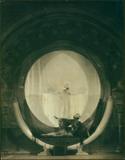       Anna Q Nilsson, Janet Gaynor, Jean Harlow, Joyzelle Joyner , Laura La Plante, Myrdith Monaghan Mortensen...    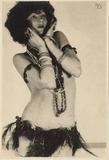 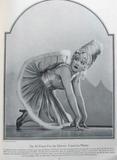     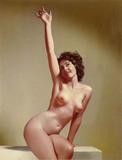   Bertha Wardell, Flora Weston, Margrethe Mather, Nahui Olin, , Rose Roland (Covarrubias), Tina Modotti...    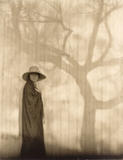   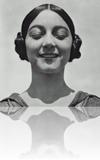 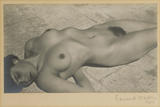 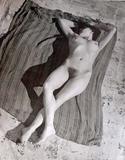     [ mod edit - dead link(s) removed] Last edited by Wendigo; May 1st, 2016 at 10:05 PM.. Reason: removed dead links |
|
|

|
| The Following 31 Users Say Thank You to mrcheese For This Useful Post: | arobo4, browser1, dasding, davey090762, fan_death, gubaman52, Hornblower, Iron393, jake cold, jawbone, johnbear, jolle13, JoSm27, kelio, Kul Kat, lordoctorr, mickriness, over65, phap, Pipemaster, Sam Spade, SovietUnionBoy, Spargel, teabags, teddybear, The Wolf Man, tsunamiSD, Watashi, zerosympa2, zider, zimbim |
|
|
|
|
#2 |
|
Veteran Member
Join Date: Nov 2008
Location: Playing Golf with Paige
Posts: 88,286
Thanks: 168,731
Thanked 1,757,319 Times in 92,046 Posts
           |
|
|
|

|
| The Following 10 Users Say Thank You to johnbear For This Useful Post: |
 |
|
|